May Rent Payment Data Reveals April Trends Have Continued as a Result of COVID-19
Last month we released a report analyzing the State of Rental Payments in the wake of the Covid-19 pandemic – including digital transaction data and notable changes in rent payment trends. Our findings for April showed that by and large, new online rent payment portal registrations were up, as were credit card transactions. And naturally, due to shelter-in-place orders and social distancing guidelines, the number of paper-based rent payments declined. Now another month has passed, and we are still living in limbo. The US unemployment rate has soared past 14%, keeping our industry on its toes with rent deferrals and alternative payments plans. The question on everyone’s mind now is, what happened in May?
Here at Zego (Powered by PayLease), we’ve been obsessively analyzing the same real-time data that we pulled last month from our digital rent payment platform, so that we can compare how rent payment behavior is shifting. We’re also over-communicating with our clients and their residents during this challenging time to gather anecdotal examples of how these rent payment trends translate to real life challenges. Comparing rental payment data isn’t a solution to the unexpected struggles our industry is facing, but we’re hoping these numbers and trends are able to provide a small amount of clarity for your communities moving forward.
Trend #1 Possible “stimulus check effect” holds percentage of rent payments steady for May

(% of Digital transactions)
In April, more residents chose to pay their rent online in lieu of dropping off a paper-based payment such as a check or money order. The same was true for May, as the uptick in digital rent payments was slight at 7.8%. But the key takeaway is that, from our Zego data, the percentage of renters who were able to pay rent (at least partially) did not drop. Our industry has been on the edge of it’s seat waiting for a potential colossal wave of rent deferrals. With two months on the books and no fatal wave on the horizon, we can only theorize a ‘stimulus check effect.’ Meaning, the percentage of digital rent payments jumped in April and held steady in May due to the government stimulus package, and/or unemployment benefits.
After a 40% drop in CashPay payments for the month of April, we’re seeing that number hold steady for May thus far. Zego’s CashPay solution is an alternative to cash and money orders where individuals pay rent via CheckFreePay® retail locations nationwide. These numbers indicate that the residents who decided to forgo visiting a retail location to make their payment in April are still abiding by the same shelter-in-place orders for May.

(% of Check Scanning transactions)
Check Scanning, the process by which onsite managers use a desktop scanner to convert paper checks into digital payments, saw 14% drop in April. We attributed this reduction in paper payments to social distancing (and an aversion to paper-to-person contact). After all, the CDC did suggest that “coronavirus may remain viable for hours to days on surfaces made from a variety of materials,” including paper checks.
However, May data shows a surprising 24% increase in Check Scanning transactions month-over-month. This increase in Check Scanning supports our “stimulus check effect” theory. It could also indicate that on-site staff are starting to return to their offices this month to scan checks. Whereas last rent cycle, they may have done their best to avoid spending time at the property by taking checks directly to the bank to deposit.
Overall, it seems more residents are attempting to avoid in-person payments. There were almost 34K new online payment portal user registrations in April, which was a 138% MoM increase from March. For the same timeframe in May, the Zego online rent payment platform saw over 36K new user registrations. While this is only a slight 8% increase MoM from April, it’s still more than double the number we typically expect to see. This two-month, high registration count trend could possibly indicate that management companies without a previous online rent payment solution are now scrambling to set one up and get their residents on board. This spike could also indicate that communities are more actively marketing their digital rent payment options to their residents.
However, the dramatic increase in new Zego Pay registrations doesn’t translate into the relative number of transactions, so we can only assume that not everyone who registered last month was able to pay rent this month. The reality of the situation is that pandemic hardships may have forced renters to spend their stimulus check differently this month.
But many companies remain optimistic. Andrew Greenberg, Vice President of Trilogy Real Estate Management, provided a May update, “To date, May rent collections are slightly behind April collections, approximately 5-10% depending on the property. The significant impact remains in the commercial collections where we are at 50% of pre-COVID levels. On the positive side, payments have increased among tenants who received some form of government stimulus and overall online payments are up significantly – 60% to 80% of total payments at each property.”
Trend #2 Credit card usage spikes again, especially for those who incur
The most interesting trend we saw come out of the April rent cycle was a 31% increase month-over-month in credit card transactions. For May, we saw an additional 20% (MoM) spike in credit card usage. This seems to be largely driven by clients who decided to incur the payment processing fees on behalf of their residents.
Last month, we at Zego (Powered by PayLease) launched our Covid-19 relief plan that allows owners to temporarily flip to a fee-incurred model. Almost 200 management companies have already opted-in, and are seeing as much as a 50% increase in online rent payment utilization. Incurring the processing fee removes the friction from the digital rent payment experience, making paying rent easy for your residents.
Management companies that were on an incurred pricing model prior to the April rent cycle saw a 117% surge in credit card payments. In comparison, the 18% uptick in May seems slight, but it shows us two things. First, possibly due to a shortage of cash during these uncertain times, residents have relied on credit cards to pay their rent two months in a row. It also shows us that management companies are working to help their residents by removing the burden of online rent payment processing fees.

(% of Credit Card transactions)
With stay-at-home orders discouraging any unnecessary outings or errands, incurred payment models are potentially elevating the number of residents who are able to pay rent. Now more than ever before, residents are inclined to pay digitally when they are not assessed a transaction fee.
Want to learn more? Read our latest article on choosing the right digital rent payment pricing model.
Trend #3 Number of lease renewals holds steady, while number of rental applicants declines
Znews, our monthly Zego newsletter, includes a hand-picked selection of the latest industry articles with an emphasis on digital communication and resident engagement tips.
Sound interesting? Subscribe to our newsletter.
Because it’s delivered to multifamily and single family professionals, we took the opportunity to gauge our audience’s top concerns throughout this ever-evolving crisis. Almost five hundred recipients completed a six question survey within the April edition, and we were intrigued by the overall findings we were able to glean from their responses.
The first survey question asked respondents to rank their top resident engagement concerns in order of importance. The results indicated that rent payment options and communication with staff members were the top two concerns.
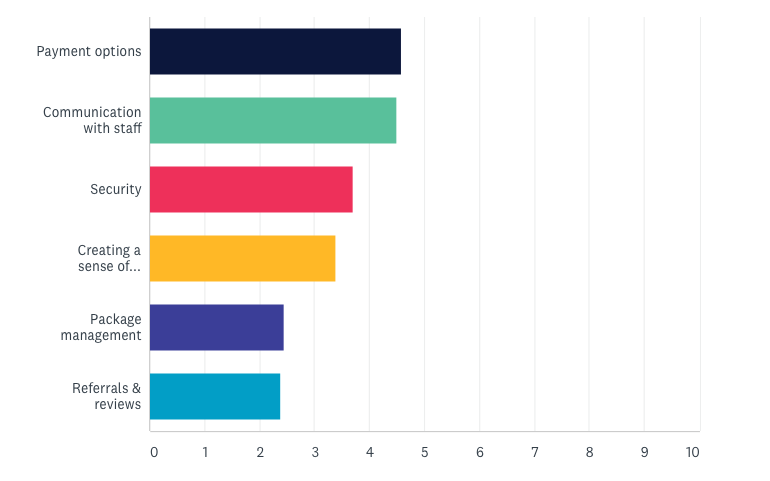
We also gave participants a chance to write-in a response for any additional concerns that were not listed above. The most common write-in responses were around health, safety, and property cleanliness to prevent the spread of COVID-19. Also, work orders and property maintenance were mentioned, as well as leasing strategies and the showing of vacant units while adhering to social distancing protocols.
Next, we asked respondents to rank their most frequently used resident communication methods. Emails and phone calls ranked highest, with face-to-face communication ranking third.
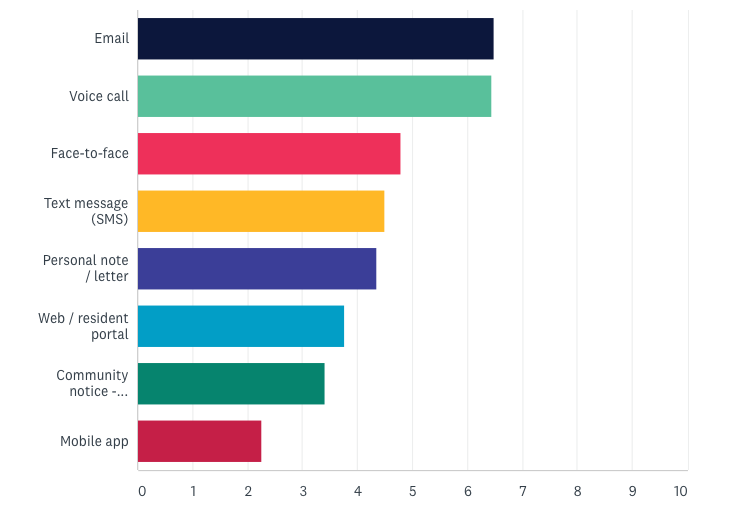
What came as a surprise, was that community engagement mobile apps ranked lowest, even though 28% of adults are using a smartphone as their primary form of online access, and the average American checks their smartphone approximately 52 times per day. We speculate that their low ranking is due to community engagement apps still being a competitive differentiator in the market. They have not yet become the norm. NAA published an article in February about the industry’s burgeoning interest in finding a single app to tie together payments, packages, maintenance, communication, smart tech, and more. We believe this ranking will certainly change as communities catch on to the all-in-one resident engagement mobile app trend.
The final three questions of the survey covered general trends in relation to changes brought on by the current global crisis.
We asked, since this pandemic crisis began, have you seen the number of digital rent payments increase, decrease, or stay the same? The results align well with our April and May digital rent payment data.
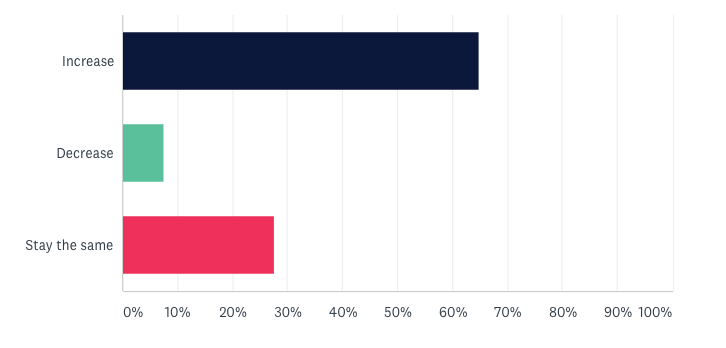
(# of Digital Payments)
We also asked, since this pandemic crisis began, have you seen the number of lease renewals increase, decrease, or stay the same? We presume that renters are staying put to avoid any further changes during this already unsettling time.
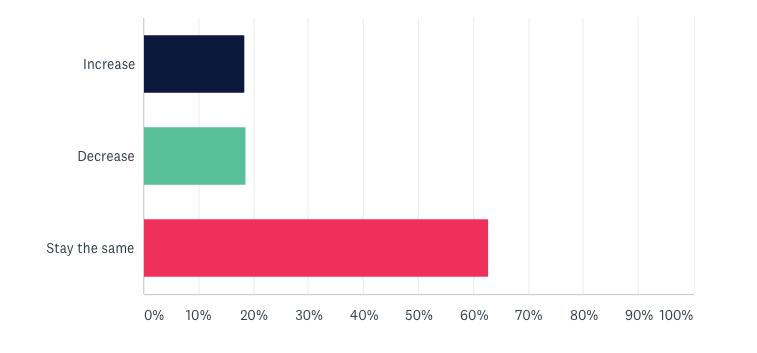
(# of Lease Renewals)
And finally we asked, since this pandemic crisis began, have you seen the number of rental applicants increase, decrease, or stay the same? Tying into the question above, we presume that because residents are staying in their homes, the number of potential renters has decreased. Safely showing vacant units has also become a matter of concern, which could correlate to the reduced number of applicants.
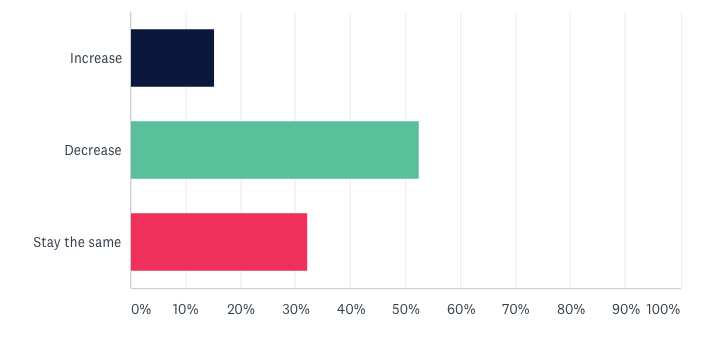
(# of Rental Applicants)
Trend #4 Interest in implementing a digital rent payment solution continues to surge
Our Zego organization saw a 34% surge of property management companies interested in implementing our digital rent payment solution in April. This month, it seems property managers and landlords are still looking to move away from paper-based rent payments, as we tracked a 24% month-over-month increase in new digital rent payment customers.
Communities that have traditionally relied on the acceptance of checks and money orders are recognizing the long list of operational benefits associated with digital rent collection (time savings, resident convenience, increased security, easy bank reconciliation, etc). On top of those standard benefits, property management companies are realizing they can leverage a digital rent payment solution during this pandemic crisis to keep residents at home, keep their staff from physically handling payments, and maintain a steady cash flow.
If your organization is currently in need of digital rent payments, contact us and we can help you get started. And if you already have a digital rent payment solution in place, but want to drive more online payments, we can also help. Our latest ebook, The Property Manager’s Guide to 100% Digital Payment Adoption, outlines best practices that you can use to encourage the use of your digital rent payment solution.
Keep Reading! We’ve handpicked a few more articles you might be interested in:
How to collect rent digitally in the midst of social distancing
5 Benefits of Online Rent Payments for Property Managers
6 tech-based “shelter-in-place” resident engagement strategies